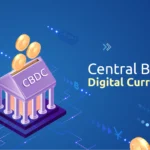🔹 How India’s Digital Rupee Could Disrupt Traditional Banking by 2030
The Indian financial system is on the brink of a revolution, and at the heart of this change is the Digital Rupee — India’s official Central Bank Digital Currency (CBDC). By 2030, this digital cash, issued and regulated by the Reserve Bank of India (RBI), could seriously shake up how banks operate, how customers use money, and the overall banking ecosystem. Forget just a digital wallet; this is a seismic shift that might rewrite the entire banking rulebook.
Let’s break down the major ways the Digital Rupee could disrupt traditional banking by 2030, why banks should be sweating (just a little), and what the future might hold for you as a user.
🔹 What Is the Digital Rupee — A Quick Refresher
Before diving deep, here’s the lowdown. The Digital Rupee is an electronic form of India’s fiat currency, fully backed by the government. Unlike cryptocurrencies, it’s not decentralized or speculative; it’s sovereign money issued by the RBI. It works like digital cash but with superpowers: instant settlement, programmable rules, and even offline usage.
Two flavors of Digital Rupee exist:
- Retail CBDC (e₹-R): For everyday users and businesses.
- Wholesale CBDC (e₹-W): For banks and financial institutions to settle transactions instantly.
🔹 Disruption #1: Shrinking Role of Traditional Bank Accounts
Banks have long thrived as gatekeepers of money storage — deposits, savings, checking accounts, fixed deposits — you name it. But the Digital Rupee could put some of that control into the hands of users directly.
- No Bank Account? No Problem.
The Digital Rupee can be stored in digital wallets, possibly even without traditional bank accounts. This is huge for India’s unbanked and underbanked populations. - Direct Access to Money.
Government subsidies, welfare payments, and other transfers can go directly to individuals’ digital wallets, bypassing banks entirely.
Impact: Banks could see reduced deposit bases as people hold funds in CBDC wallets instead of bank accounts. This will force banks to rethink how they attract and retain deposits.
🔹 Disruption #2: Instant, Cost-Free Payments Threaten Bank Revenue
Traditional banks earn a chunk of their revenue from payment processing fees, transaction charges, and interbank settlement fees. The Digital Rupee, with its near-zero transaction costs and instantaneous settlement, will put massive pressure on these revenue streams.
- Bypassing Intermediaries:
CBDC transactions can occur peer-to-peer without clearing houses or intermediaries, slashing processing times and costs. - Reduced Card Network Dominance:
If the Digital Rupee integrates with UPI-like functionality, banks and card networks could lose their dominance in retail payments.
Impact: Banks will need to innovate new revenue models beyond fees, possibly charging for value-added services rather than basic payments.
🔹 Disruption #3: Programmability Changing Credit and Lending Models
One of the coolest features of the Digital Rupee is programmability — the ability to code money with conditions and rules. This opens up fresh possibilities in lending and credit.
- Conditional Payments:
Loans and subsidies could be disbursed with specific use-cases embedded in the digital money itself. Imagine student loans that can only be used for education expenses. - Automated Repayments & Smart Contracts:
Lending processes could become more automated, reducing defaults and enabling real-time adjustments.
Impact: Traditional lending models could be disrupted as banks face competition from tech-driven, automated lending platforms leveraging programmable money.
🔹 Disruption #4: Banks Under Pressure to Boost Cybersecurity & Transparency
With money going digital at a core level, the risks of cyberattacks, fraud, and data breaches rise exponentially. The Digital Rupee demands rock-solid cybersecurity from banks.
- Higher Compliance Burdens:
Banks will have to meet stringent RBI guidelines for CBDC custody, transaction monitoring, and data protection. - Transparency & Traceability:
Every transaction can be logged on a secure ledger, increasing visibility but also raising privacy concerns.
Impact: Banks will need to invest heavily in technology upgrades and build user trust around security and privacy, or risk losing customers.
🔹 Disruption #5: Potential Disintermediation in Cross-Border Payments
Banks currently play a crucial role in cross-border remittances — a massive $87 billion market for India. The Digital Rupee, interoperable with other countries’ CBDCs, promises near-instant, low-cost cross-border transactions.
- Faster Remittances:
No more waiting days for money to clear. - Lower Fees:
The middlemen (banks, correspondent banks) will be cut out.
Impact: Banks will lose a lucrative remittance fee business unless they evolve quickly and embed CBDC functionality into their cross-border offerings.
🔹 Disruption #6: New Entrants and Competition from Tech Firms
With the Digital Rupee acting as a platform for innovation, non-bank fintechs and tech giants could enter the payments and lending space more aggressively.
- Embedded Finance & Open Banking:
Programmable money allows seamless integration with apps, digital wallets, and ecosystems beyond traditional banks. - Increased Competition:
Banks could face competition from super-apps, payment platforms, and blockchain-based startups.
Impact: Banks must embrace collaboration with fintechs or risk becoming irrelevant in the digital economy.
🔹 The Road Ahead: Banks Must Adapt or Die
By 2030, banks that cling to old models — relying on deposits, fees, and brick-and-mortar branches — will find themselves squeezed. Those who innovate, leverage the Digital Rupee’s potential, and focus on customer experience will survive and thrive.
Key survival moves:
- Partner with RBI and fintechs to build CBDC-compatible services.
- Launch value-added offerings like digital lending, wealth management, and programmable finance.
- Invest in cybersecurity and AI-driven compliance.
- Enhance digital literacy and educate customers on CBDC usage.
🔹 What It Means for You, the User
For everyday Indians, the Digital Rupee means:
- Faster, cheaper, and more secure payments.
- Access to digital money without needing a bank account.
- Increased transparency, but also a need for digital literacy.
- Smarter, programmable money that can change how you receive and use funds.
🔹 Final Verdict: The Digital Rupee Is a Bank Disruptor — But Not a Killer
India’s Digital Rupee won’t kill banks overnight, but it will force a reinvention of their role. The next decade will witness a blended ecosystem where banks, fintechs, and the central bank co-create a faster, fairer, and more inclusive financial system.
Buckle up, because banking in 2030 won’t look anything like it does today.




